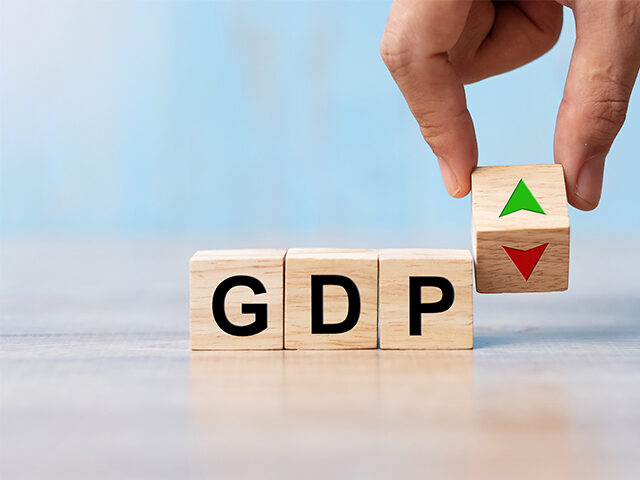The U.S. economy in the final quarter of last year grew at a slightly slower rate after adjusting for inflation than previously estimated, the Commerce Department reported Wednesday.
Gross domestic product, the government’s broad measure of economic activity, expanded at an annual pace of 3.2 percent after adjusting for inflation. That was slightly below the 3.3 percent reported in the initial estimate released last month.
The annual rate of inflation used in the calculation of real GDP, which comes from the personal consumption expenditure price index, was raised from the original estimate of 1.7 percent to 1.8 percent. Core inflation, which excludes food and energy prices, rose at a 2.1 percent rate, higher than the 2.0 percent rate originally estimated.
Economists had forecast that the revision would leave GDP unchanged, with the range of estimates starting at 3.2 percent and topping out at 3.4 percent.
Before the adjustment for inflation, the economy actually grew even faster than initially reported. In the fourth quarter, the growth rate was 4.9 percent, up from the 4.8 percent estimated last month.
The increase in fourth-quarter GDP followed an even faster 4.9 percent pace of growth in the third quarter. For the full year, the economy grew 2.5 percent, unchanged from the January estimate. That is well above what most economists and Federal Reserve officials had forecast at the start of last year.
The Fed’s rate hikes were expected to slow the rate of economic growth last year and lead to a higher rate of unemployment. Instead, the economy accelerated and unemployment fell to 3.7 percent. Despite this, inflation did come down sharply in the first half of last year.
Since sometime last summer, however, inflation appears to have become stuck in high gear. In recent months, it is showing signs of accelerating again. This has led Wall Street to revise its expectations for the timing and size of rate cuts this year.
The downgrade in the growth rate in the second estimate stems from a lower appraisal in the pace of inventory growth by U.S. businesses. These are goods that have been produced and not yet sold. When businesses build inventory at a faster rate, this adds to GDP growth.
This was somewhat offset by a faster pace of consumer spending and a key part of business investment. Consumer spending is estimated to have risen at a three percent pace, up from the earlier estimate of 2.8 percent. Nonresidential private fixed investment, an important indicator of business activity, rose at a 2.4 percent annual rate, an increase from the earlier estimate of 1.9 percent.
Total private investment, however, rose just 09. percent, a big downshift from the initial 2.1 percent estimate. This was driven by a downward revision in equipment investment from one percent to -1.7 percent.
The estimate for growth in the fourth quarter and the full year will be revised again at the end of March.

COMMENTS
Please let us know if you're having issues with commenting.